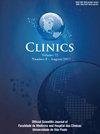Routinely available inflammation biomarkers to predict stroke and mortality in atrial fibrillation
IF 2.2
4区 医学
Q2 MEDICINE, GENERAL & INTERNAL
引用次数: 0
Abstract
Background
This study aimed to assess the predictive value of 7 routinely available inflammation biomarkers for stroke and all-cause mortality in 229 non-valvular AF patients.
Methods and results
C-reactive protein, Albumin (ALB), d-dimer, fibrinogen, the number of platelets, lymphocytes, monocyte and neutrophils were measured. The Multivariable Cox proportional hazard model was used to assess the predictive value of the inflammation biomarkers for stroke and all-cause mortality, the c-statistic, Net Reclassification Improvement (NRI), and Integrated Discrimination Improvement (IDI) were calculated. Lymphocyte Monocyte Ratio (LMR) was the most informative biomarker for predicting stroke, and adding LMR to the CHA2DS2-VASc score did not improve its predictive ability for stroke, but it did improve its reclassification ability. Similar results were observed when comparing LMR+ CHA2DS2-VASc score with the ABC stroke score. For all-cause mortality, a Systemic Inflammation Score (SIS) score was calculated using ALB, fibrinogen and LMR, and adding SIS to the CHA2DS2-VASc score showed a significant improvement in its predictive ability and reclassification ability. There were no significant differences in predictive and reclassification ability for all-cause mortality between SIS+CHA2DS2-VASc score and ABC death score.
Conclusions
Adding routinely available inflammatory biomarkers to the CHA2DS2-VASc score increased its ability to predict all-cause mortality, suggesting this cost-effective biomarker strategy may help to improve decision support in AF.
求助全文
约1分钟内获得全文
求助全文
来源期刊

Clinics
医学-医学:内科
CiteScore
4.10
自引率
3.70%
发文量
129
审稿时长
52 days
期刊介绍:
CLINICS is an electronic journal that publishes peer-reviewed articles in continuous flow, of interest to clinicians and researchers in the medical sciences. CLINICS complies with the policies of funding agencies which request or require deposition of the published articles that they fund into publicly available databases. CLINICS supports the position of the International Committee of Medical Journal Editors (ICMJE) on trial registration.
 求助内容:
求助内容: 应助结果提醒方式:
应助结果提醒方式:


